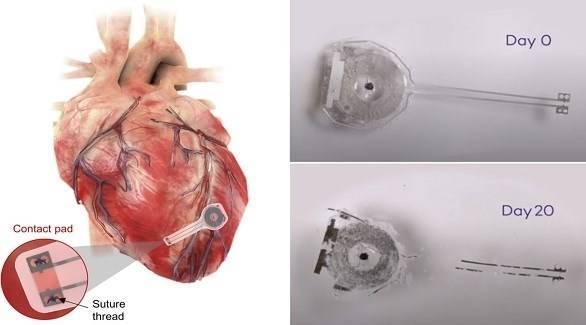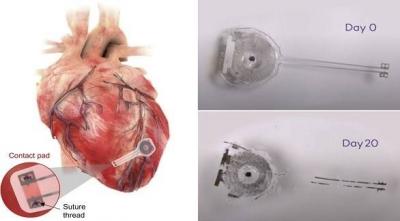American scientists have developed the world's first wireless pacemaker, which is battery-free, fully implantable, and dissolves in the body when no longer needed. The thin, lightweight device wirelessly collects energy from a distant antenna and is made from biocompatible materials that are naturally absorbed in the body over 5 to 7 weeks. The researchers behind the device hope it will soon be used instead of temporary pacemakers, which require surgical removal.
The lightweight device was developed by researchers from Northwestern University and George Washington University and is believed to be the first transient pacemaker ever, harvesting energy wirelessly from an external antenna using near-field communication protocols, the same technology used in smartphones for electronic payments, eliminating the need for bulky batteries and hardware like wires.
According to the team, this not only reduces the risk of infection but also lowers the chance of permanent tissue scarring. John A. Rogers, who led the study, said, "Devices placed in or near the heart create risks for infection and other complications. Wireless transient pacemakers overcome the main drawbacks of traditional temporary devices by eliminating the need for wires and leads to pass through the skin, thereby providing potential cost reductions and improving outcomes in patient care."
Dr. Rishi Arora, who co-led the study, explained, "Sometimes, patients only need pacemakers temporarily, perhaps after open-heart surgery or a heart attack or a drug overdose. After the patient's heart stabilizes, we can remove the pacemaker. The current standard of care involves placing a wire that remains in place for three to seven days."
Arora added, "In contrast, the new device requires only a surgical procedure for implantation, and in the future, it could even be inserted through a vein in the leg or arm. Instead of using wires that can become infected or dislodged, we can implant a leadless, biocompatible pacemaker in the patient's body."
The device is implanted directly onto the heart's surface and can be activated remotely. Over weeks, this new type of pacemaker dissolves or degrades on its own, thus avoiding the need for physical removal of the pacemaker electrodes, according to the Daily Mail.




